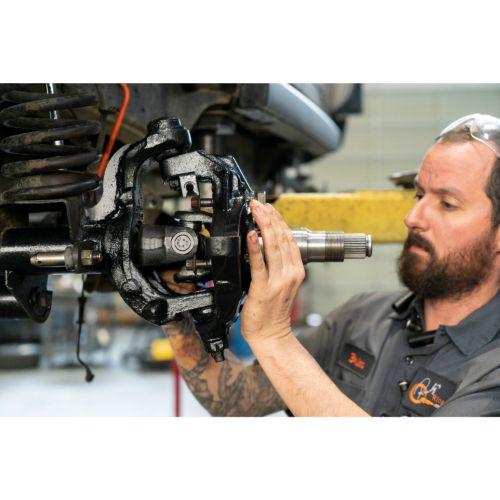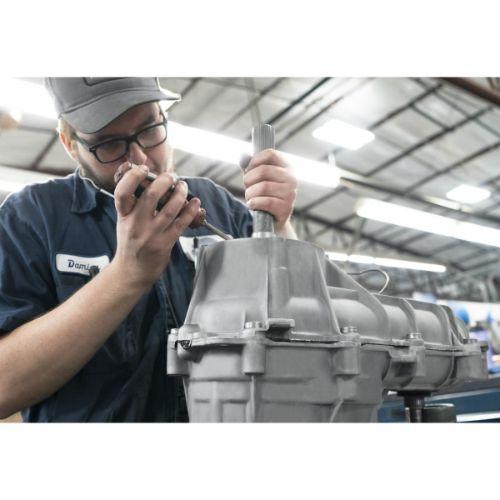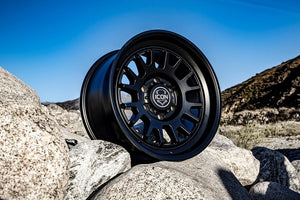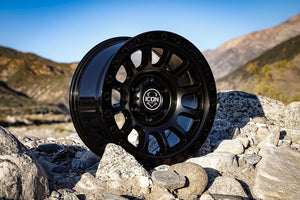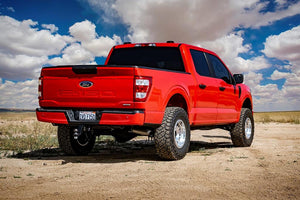Bigger Tires Need Bigger Gears
Fall is now kicking in full force – which, for off-road enthusiasts, means some enjoyable weather and wide-open trails. But it also means that customers who added bigger tires without swapping gears aren’t taking it to the sand, the mud, the rocks and the trails like they thought they would. With the variety of off-road vehicles and the variety of terrain they encounter, upgrades should be considered for any off-road vehicle. Just like any upgrade specific to an application, doing the same for your drivetrain is key. Doing otherwise can quickly put your customer back on the trailer and headed for home, broken down and broke in the pocketbook. Off-road enthusiasts will often just have enough in their wallet to add what they see in order to create a ‘cool factor’ with their vehicle. But when they hit the hills, cool rigs are sometimes the last in line, barely making the rocks and hill climbs. What most don’t know is that when adding bigger tires, the need for more torque increases. To not only cover more circumference of the larger diameter tire, but to provide more pressure at the surface, the drivetrain must increase its ability to transfer the torque from the transmission to the rubber on the ground. To equal the energy from a smaller tire to cover a distance, a larger tire can cover the distance with fewer rotations. But for the same RPMs to cover the same distance with a larger tire, it will require enhanced gearing and torque. The engine, tranny and drivetrain all deserve the best set-up for stellar performance, and when the installation is done right, customers get all the performance they can out of the rig. But before any changes to the drivetrain can be made, you must identify the customers’ needs. Is your customer’s need a more generic off road or trail experience? Are they trailering or driving to the trail? Perhaps this is their daily driver and freeway speed is a must. To help you determine what fits your customer’s needs, RANDYS Worldwide provides a handy calculator for tire height and specs, but conferring with experts, like the tech support at RANDYS, is always a good idea based on how the vehicle will be used. And when determining the proper gearing for the vehicle, accuracy can make the difference between heading up the trail or heading home. Neal Hollingsworth of RANDYS Worldwide mentions, “A great example of the amount of accuracy required is the fact that RANDYS Worldwide just released a choice of seven ratio options: 3.45, 3.75, 4.11, 4.56, 4.88, 5.13, and 5.38 for JLs and JTs. This number of options allows for the installation of the most accurate gear based on tire size, performance goals and fuel economy.” “One of the things on the JLs and JTs is that they now come with an 8-speed transmission. People incorrectly assume that with the new transmission program, when they install bigger tires, they don’t need to change the gears. This assumption can render your Jeep up the creek, instead of up the trail.” See more about this misnomer, as described by Nick Ashby of RockStar Garage, in this video. Once you know how to help your customer get the most out of their rig, it’s time to seek out the equipment to do it once and do it right. But a proper build doesn’t end with gears alone. Upgrades to performance vehicles can take on many different forms, and that could include not just replacing, but upgrading, your customer’s axles. To provide your customer with increased strength and performance, opt for heat treated chromoly axles, like Yukon Gear and Axle‘s offerings, which come in both 1541 and 4340 alloys. Additionally, Yukon’s air-operated, selectable locker will give your customer on-demand traction, which is key when driving on multiple surfaces like sand, gravel and rock. Yukon’s Zip Locker provides on-demand traction and 100% traction to both tires with the flip of a switch. Meanwhile, Yukon’s mechanical Grizzly Locker is built to engage both tires but allows for disengagement while negotiating turns. The Grizzly Locker is an excellent choice for towing and the best choice for pulling out on a slippery boat ramp. High quality Super Joints top off a quality upgraded build featuring a forged 4340 chromoly cross and oversized trunnions for maximum performance. The sales and tech support teams at RANDYS are there to get you the right gears and installation kits and provide you piece of mind for your build that your customer will get the most out of their vehicle and spreads the word about a job done right. Call for advice and tech support any time at 866-887-4487 to ensure you’re giving the customer the right combination.
Warning Signs of a Failing Transfer Case
Transfer cases are used in AWD and 4WD vehicles and are responsible for directing power to both axles. While torque from the engine is sent to one axle at all times, it is only sent to both axles when the driver wants or needs the additional power. This is particularly important during inclement weather conditions, when having power directed at all four tires aids in traction and assists with accident avoidance in rough terrain. A transfer case is an important (but little-discussed) undercar component that can directly affect the safety of your customers. Especially when the temperatures start to drop and snow appears in the forecast, it’s important to take preventative steps to ensure that a customer’s AWD or 4WD system will engage when it’s called upon. Read on to learn about the top warning signs of a failing transfer case and see how you can help drivers stay ahead of the season! Gear Issues If the vehicle seems to have trouble shifting gears, it should be seen by a certified mechanic and thoroughly evaluated for potential issues. Whether it’s an automatic or manual transmission, the vehicle should smoothly transition into higher or lower gears. Something as small as a damaged or worn seal could lead to leaking transfer case fluid, which doesn’t allow for proper lubrication between the components of the unit. Without the proper level of fluid, the transfer case will eventually deteriorate beyond repair, so it’s important to correctly diagnose and correct the problem as soon as possible. Unreliable Engagement Unreliable or intermittent engagement of the transfer case signals broken internals, which should be treated as an emergency. If a transfer case is trying to engage damaged components, a small problem could quickly become much worse. Again, your shop will need to correctly diagnose the issue and then explain to the customer the importance of this safety issue. Fluid Under the Vehicle While some fluid under the vehicle can be part of condensation from normal operation, noticing reddish drips can be a sign of leaking transmission fluid. With a broken seal or gasket, leaking fluid will quickly and prematurely lead to a destroyed unit. This is a warning sign that should be taken seriously, as a small leak can turn into dry, overheated internals. Repairing a small gasket leak will be much cheaper for your customer than repairing or replacing an entire transfer case. Noises When there are issues within the transfer case, a wide variety of sounds can crop up. Metal-on-metal grinding noises can signal a broken output shaft or deteriorated internal gears. Whenever noise is coming from underneath the car, it’s time to investigate. How to Prevent Transfer Case Failure Overall, routine maintenance is the best thing for your customer’s vehicle. It ensures that everything continues to function as it should, maintains the manufacturer’s warranty, and prevents catastrophic failures from occurring. Reminding them to bring the vehicle in at the first sign of issues is essential, as well. Whether it’s leaks, noises, or changes in the way the car shifts, let them know you’re available to diagnose and remedy the issue. If there are signs of failure in a vehicle that’s over 10 years old, it could be time for a total replacement. At times, small repairs to the transfer case can outweigh the cost of a new unit and buy some time, but there always comes a day when the cost of a new transfer case becomes worth the investment. When that time comes, there are two options: new or remanufactured units. While new units have their perks, a remanufactured unit can deliver the exact same strength, durability, and like-new finish. With a remanufactured unit, you can also offer your customers the same longevity of a new unit, but at a price that’s wallet-friendly. When you present lower-cost options to your customer that are backed by the same quality guarantee, you’ll gain trust, appreciation, and repeat business in return.
